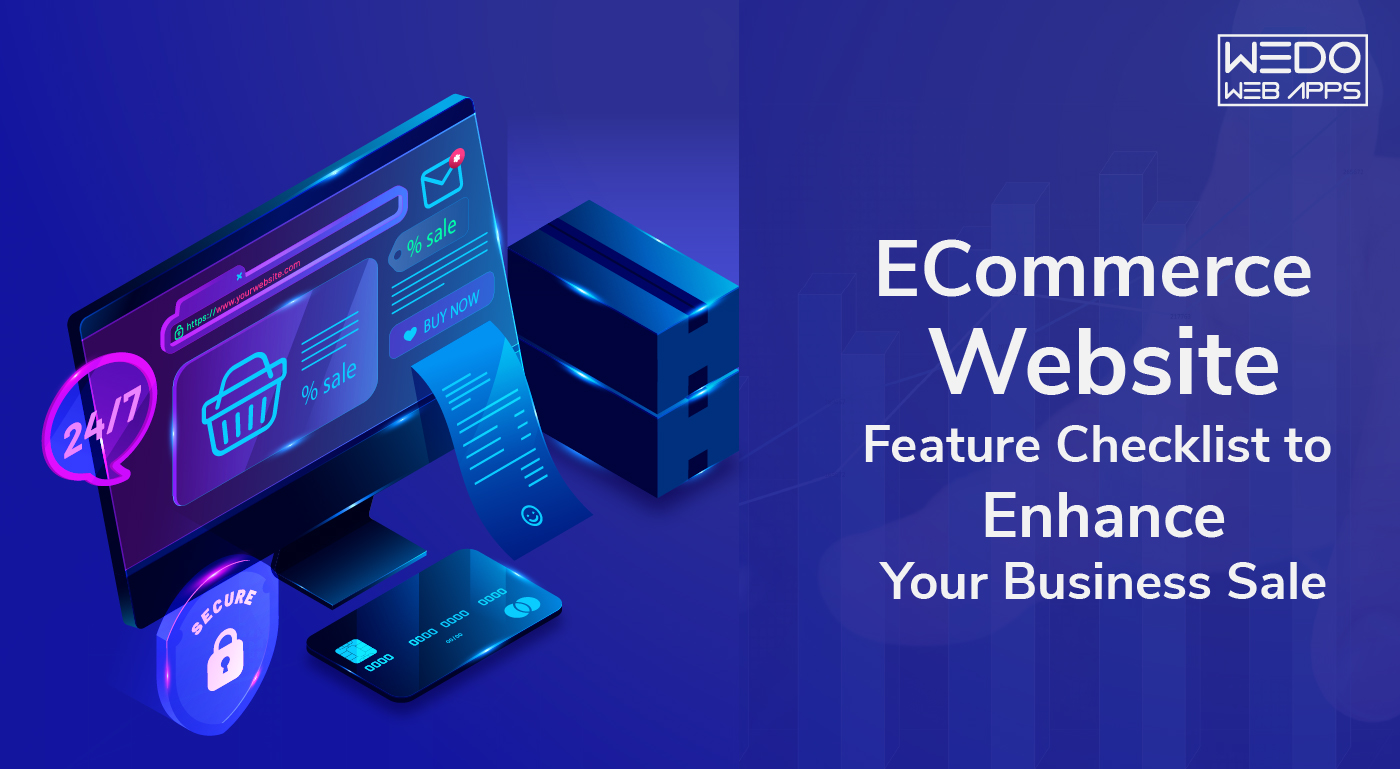Quick Summary
How can I scale my ecommerce store globally from Canada with the right development partner?
You can scale your store globally by adopting the right international ecommerce strategy, using scalable cloud-based platforms, and partnering with a Software Development Company that specializes in global expansion. The right partner ensures seamless localization, multi-currency setup, secure payments, and compliance across all target regions.
This blog explains how Canadian businesses can achieve global ecommerce expansion through strategic planning, robust development, and technology-driven optimization. From overcoming cross-border challenges to implementing AI, automation, and localized marketing, it offers a step-by-step guide for brands ready to go global. With expert global ecommerce development services, businesses can unlock new markets, boost sales, and build a truly borderless brand presence.
Introduction
The Canadian eCommerce industry has been on a steady rise, driven by digital adoption, improved payment infrastructures, and consumers embracing online shopping as part of their daily lives. Yet, as businesses mature in this space, one reality becomes clear: scaling within Canada alone has its limits. Local competition is increasing, customer expectations are evolving, and the demand for diverse product choices is pushing brands to think beyond their domestic borders.
In 2025 and beyond, the true growth potential for Canadian businesses lies in global eCommerce expansion. The world is more connected than ever, and international consumers are open to shopping across borders, provided the experience feels seamless, secure, and personalized. For Canadian companies, this means opportunity: tapping into nearby markets like the United States, expanding into high-value regions like Europe, and exploring high-growth economies like Asia.
However, going global is not as simple as opening an online store to international traffic. It requires a well-defined international eCommerce strategy, covering technology, logistics, compliance, customer experience, and cultural nuances. By leveraging scalable eCommerce platforms, cross-border integrations, and the expertise of a trusted software development company, Canadian businesses can build a sustainable global presence and compete confidently on the world stage.
Why Canadian Businesses Should Think Global in 2025
Canada’s eCommerce market is booming, but domestic growth has its limits. Reports indicate that Canadian eCommerce growth will continue at a steady pace in 2025; however, the country’s relatively small population and rising competition make it more challenging for businesses to achieve large-scale success within national borders alone.
So, what’s the next step? Cross-border eCommerce in Canada
The Case of Thinking Global
- Rising Digital Adoption: More Canadians are shopping online than ever before, creating a crowded domestic market.
- International Demand: Global shoppers are increasingly open to buying from Canadian brands, provided they get seamless access.
- Revenue Expansion: Markets like the US, EU, and Asia offer exponential opportunities compared to Canada’s limited customer base.
Opportunities Beyond Borders
- United States: Proximity, cultural similarities, and one of the largest eCommerce markets worldwide.
- Europe (EU): High purchasing power and strong appetite for diverse, premium products.
- Asia (China & India): Massive digital-first customer bases, growing middle-class populations, and strong mobile commerce adoption.
By targeting these markets strategically, Canadian businesses can unlock entirely new revenue streams while building global brand recognition.
Why 2025 is the Turning Point?
- Cross-border eCommerce infrastructure (payments, shipping, tax compliance) is more advanced and accessible than ever.
- Cloud-native eCommerce platforms enable brands to scale across countries without having to rebuild their technology from scratch.
- AI-driven personalization helps businesses adapt to cultural differences and enhance international user experiences.
In short, 2025 is the year when “going global” shifts from being optional to being necessary for long-term Canadian eCommerce growth.
A Global Mindset for Canadian Businesses
Expanding internationally is not just about shipping products overseas. Success comes from:
- Offering multi-currency and multilingual experiences.
- Understanding regional customer behaviors.
- Building a compliant, scalable international eCommerce strategy.
Canadian businesses that embrace this mindset now will outpace competitors and future-proof their operations for the next decade.
Key Challenges in Expanding Beyond Canada
Scaling eCommerce globally sounds exciting, but Canadian businesses face real obstacles when stepping into international markets. To succeed, you must plan for the hurdles that can slow down or even derail your global journey.
Payment Gateways & Multi-Currency Complexities
- Customers expect to pay in their local currency without hidden fees.
- Many Canadian businesses struggle to integrate international payment gateways that support multiple regions.
- Fraud prevention and compliance with security standards (like PCI DSS) become more complex.
- Without seamless transactions, even the best international eCommerce strategy risks losing customers at checkout.
Logistics & Shipping Delays
- Global expansion requires fast and reliable shipping.
- International deliveries face customs clearance, unexpected tariffs, and higher freight costs.
- Supply chain disruptions can lead to delays, damaging brand trust.
- To remain competitive, businesses need to partner with logistics providers who specialize in cross-border eCommerce from Canada.
Taxation & Compliance Challenges
- Selling across borders means dealing with multiple tax systems (VAT, GST, HST, etc.)
- Non-compliance with international tax regulations can lead to penalties and blocked shipments.
- Businesses must track region-specific compliance laws, such as GDPR in Europe or local consumer protection acts.
- Scaling successfully requires professional support to ensure Canadian eCommerce costs don’t come at a legal cost.
Multilingual and Multi-Cultural User Experiences
- Global customers expect shopping in their own language with culturally relevant content.
- A one-size-fits-all approach leads to poor engagement and higher cart abandonment rates.
- Even design choices, imagery, and product descriptions must be localized.
- Providing personalized, multilingual user experiences is critical for building brand loyalty worldwide.
The Bottom Line
Expanding beyond Canada offers huge potential, but these challenges can quickly become roadblocks if not addressed. Businesses that proactively invest in scalable technology, logistics partnerships, and compliance-ready solutions will position themselves for success in global markets.
How to Scale Your eCommerce Store Globally (Step-by-Step)
Expanding your eCommerce store beyond Canada requires more than opening your checkout to international customers. True global scaling is a structured process that involves technology, compliance, logistics, and customer experience. Here is a step-by-step international eCommerce strategy personalized for Canadian businesses looking to compete worldwide.
1. Choose the Right eCommerce Platform
- Select an eCommerce platform that supports multi-currency, multi-language, and global integrations.
- Shopify, Magento, and WooCommerce offer solid foundations, but larger businesses may need headless commerce for flexibility.
- Look for platforms that integrate with cross-border tools to reduce future complexity.
2. Enable Multi-Currency and Multi-Language Options
- Customer convert better when they shop in their native language and currency.
- Add currency selectors or automatic geo-detection.
- Translate product descriptions and checkout flows to match target regions.
- Consider AI-powered translation tools, but have local experts refine key content.
3. Optimize for Global SEO
- Research keywords not just in English, but in target languages.
- Implement hreflang tags to signal the correct language versions to Google.
- Localize content, don’t just translate, but adapt it to regional search intent.
- This ensures your Canadian eCommerce growth continues globally.
4. Integrate Cross-Border Payment Gateways
- Offer trusted global options like PayPal, Stripe, Adyen, and local processors (e.g., Alipay in China, Paytm in India).
- Ensure secure payments with PCI DSS compliance.
- Build trust with customers by showing familiar logos and clear currency conversions.
5. Streamline Logistics & Shipping
- Partner with global carriers (FedEx, DHL, UPS) and region-specific providers.
- Provide customers with real-time tracking and transparent shipping costs.
- Consider distributed warehousing or fulfillment centers closer to key markets.
- Efficient shipping reduces cart abandonment and builds loyalty.
6. Ensure Compliance Across Regions
- Understand international tax regulations (VAT, GST, HST, etc.)
- Adapt to data privacy laws like GDPR (Europe) or CCPA (California).
- Work with legal experts to prevent costly mistakes.
- Compliance should be baked into your scaling plan, not treated as an afterthought.
7. Personalize Customer Experiences with AI
- Use AI-driven recommendations engines to adapt product suggestions by region.
- Use chatbots for 24/7 multilingual customer support.
- AI can also optimize pricing strategies based on local buying power.
8. Use Cloud-Native Applications
- Cloud-native infrastructure allows you to scale quickly without massive upfront costs.
- Applications hosted on AWS, Azure, or Google Cloud make it easier to expand server capacity as traffic grows.
- This ensures global eCommerce expansion is smooth and reliable.
9. Strengthen Data Security
- Security breaches erode trust in seconds, especially in cross-border commerce.
- Invest in SSL encryption, multi-factor authentication, and fraud detection systems.
- Comply with region-specific data security standards to avoid legal consequences.
10. Partner with a Trusted Software Development Company
Canadian businesses often underestimate the complexity of scaling globally. Partnering with an experienced Software Development Company ensures your eCommerce store is:
- Customized for global scalability.
- Integrated with payment, logistics, and compliance systems.
- Future-proof with modern technologies like headless commerce and cloud-native infrastructure.
Canadian businesses seeking growth can benefit from global eCommerce development services that ensure scalability, compliance, and seamless cross-border integration.
This step-by-step framework provides a practical roadmap for Canadian ecommerce stores to scale globally. By following these steps, businesses move beyond trial-and-error and embrace a strategy designed for sustainable international growth.
Strategies for Global eCommerce Expansion
Once the foundational steps are in place, Canadian businesses need to focus on strategic approaches that make international scaling sustainable. These strategies are not one-size-fits-all; they are designed to help brands adapt quickly, stay competitive, and deliver exceptional customer experiences across regions.
Embrace Headless Commerce for Flexibility
Traditional eCommerce platforms can limit your global growth. Headless commerce decouples the front-end from the back-end, allowing businesses to:
- Customize storefronts for different regions without affecting the core system.
- Launch faster in new markets by reusing backend logic.
- Experiment with new front-end experiences, such as mobile apps, AR try-ons, or voice commerce.
For businesses planning rapid global eCommerce expansion, headless commerce ensures agility and speed.
Use Cloud-Native Applications
Scaling globally means unpredictable spikes in traffic and demand. Cloud-native infrastructure offers:
- On-demand scalability without heavy upfront investment.
- Global server distribution for faster load times in multiple regions.
- Reliability during peak shopping seasons like Black Friday or Singles’ Day.
Cloud-native adoption ensures Canadian eCommerce growth is not hindered by technology bottlenecks.
Build a Scalable Infrastructure
Global operations demand a strong foundation. A scalable eCommerce infrastructure should include:
- CDNs (Content Delivery Networks) to serve content faster worldwide.
- API-first architectures for easy integrations with local tools.
- Redundant systems that minimize downtime in global markets.
This technical layer is what separates small expansions from truly global operations.
Invest in Cross-Border Marketing
Reaching international customers requires more than translating ads. Effective cross-border marketing includes:
- Localized SEO and PPC Campaigns targeting local search engines and regional keywords.
- Cultural adaptation of ads, visuals, and promotions.
- Leveraging regional platforms (eg, WeChat in China, Line in Japan, TikTok in global youth markets).
- Social proof with local influencers who establish trust.
By aligning marketing strategies with cultural nuances, Canadian businesses can achieve stronger conversions and loyalty.
Canadian businesses seeking growth can benefit from global eCommerce development services that ensure scalability, compliance, and seamless cross-border integration. Working with experts means your eCommerce store will not only enter new markets but also thrive in them.
The Takeaway
Global expansion requires more than just technology; it is about combining the right infrastructure with market-specific strategies. Canadian brands that adopt headless commerce, invest in scalable cloud systems, and localize their marketing will position themselves as global contenders in 2025 and beyond.
Essential Tools & Technologies for Global eCommerce
Global eCommerce expansion is not just about strategy; it is powered by the right tools and technologies. Without them, even the best plans can collapse under operational inefficiencies or poor customer experiences. For Canadian businesses, investing in modern tools ensures smooth scaling, consistent user satisfaction, and data-driven decisions.
AI-Powered Personalization Tools
Personalization is no longer exceptional; it is expected. With AI-Powered solutions, you can:
- Recommend products based on a shopper’s browsing or purchase history.
- Dynamically adjust website content for different regions and demographics.
- Predict buying behaviors and seasonal trends through data analytics.
Tools like Bloomreach, Dynamic Yield, and Salesforce Einstein help eCommerce businesses deliver hyper-personalized experiences that boost conversions across international markets.
Pro Tip: Combine AI-driven personalization with multilingual interfaces to create region-specific experiences that feel local, not globalized.
International Payment Processes
Payments can make or break Cross-border sales. A successful international eCommerce strategy requires payment gateways that handle multiple currencies, taxes, and regulations seamlessly.
Top options include:
- Stripe: Ideal for businesses needing customizable, developer-friendly integrations.
- PayPal: Trusted globally, offering buyer protection and local adaptability.
- Adyen: Supports dozens of regional payment methods.
- Alipay and Paytm: Crucial for entering Asian markets like China and India.
When expanding globally, businesses should test multiple gateways to find the ones best aligned with each target region’s preferences.
Logistics & Shipping Automation
Efficient logistics is the backbone of cross-border eCommerce in Canada. Automated systems reduce delays, minimize human error, and improve transparency for customers.
Leading logistics automation tools include:
- ShipStation: centralizes global orders and streamlines fulfillment.
- Easyship: Offers real-time shipping rates, custom automation, and tax calculations.
- AfterShip: Enhances post-purchase experience through real-time order tracking.
Automation ensures that international customers enjoy the same fast, reliable service as domestic ones, a key factor in building trust abroad.
Cloud-Native Infrastructure
To support global scale, Canadian businesses should rely on cloud-native architecture. It offers:
- Elastic Scalability: Handle sudden traffic spikes across continents.
- High Availability: Prevent downtime during heavy global operations.
- Data Redundancy: Store customer data securely in multiple regions.
Platforms like Google Cloud, AWS, and Microsoft Azure are the foundation of modern global eCommerce systems. They empower brands to expand quickly while keeping costs predictable.
The Tech-Driven Advantage
By adopting these essential tools, Canadian eCommerce businesses gain:
- Faster international expansion.
- Enhanced customer satisfaction.
- Reduced operational complexity.
- Scalable systems that grow with the business.
Bottom Line: Technology is the enabler that turns a regional store into a global brand. The right combination of personalization, automation, and cloud technology will define who leads the next wave of Canadian eCommerce growth.
Case Study Spotlight: Expanding Beyond Canada
Let’s look at a realistic example of how one Canadian eCommerce brand successfully went global. Meet Maple & Mode, a Toronto-based lifestyle retailer that started as a small Shopify store specializing in eco-friendly home decor and fashion accessories. Within 3 years, they had built a loyal customer base across Canada, but they soon realized that their growth potential was capped domestically. To achieve long-term scalability, the founders set their sights on global eCommerce expansion.
1. The Challenge: Crossing Borders with Confidence
While Maple & Mode had solid traction locally, scaling beyond Canada introduced new hurdles: logistical, technical, and regulatory. The company faced:
- Currency and Payment Barriers: Their existing setup only supported CAD transactions, limiting potential customers from the US, UK, and EU.
- Shipping Complexities: International delivery options were inconsistent, with high shipping costs and long delays discouraging global buyers.
- Compliance Confusion: Each target region had different taxation, invoicing, and data compliance rules.
- Limited Localization: Their website displayed content only in English, missing opportunities in French-speaking and European markets.
Despite having a great product, Maple & Mode realized that without an effective international eCommerce strategy, scaling across borders wasn’t sustainable.
2. The Turning Point: Partnering with the Right Development Team
Recognizing the need for technical expertise, Maple & Mode decided to partner with a Software Development Company that specialized in cross-border eCommerce for Canadian businesses. This collaboration became a game-changer for their global journey.
The development team helped them:
- Replatform to a Headless Commerce Architecture: This provided flexibility to integrate multiple front-ends (localized for different regions) with one centralized backend system.
- Implement Multi-Currency and Multi-Language Features: The store now supported CAD, USD, GBP, and EUR, and offered content in English, French, and German.
- Integrate Smart Payment Gateways: Through Stripe and PayPal integrations, customers could pay seamlessly in their local currencies.
- Optimize for Global SEO: The developers implemented region-based subdirectories and hreflang tags, helping Maple & Mode rank in region-specific searches.
- Automate Logistics and Inventory: By connecting their store to third-party logistics (3PL) providers, they streamlined international shipping and order tracking.
Working with a Software Development Company that has proven expertise ensures your eCommerce platform is built to compete globally.
3. The Outcome: From Local Brand to Global Player
Within six months of implementing the new system, Maple & Mode saw:
- 300% increase in international traffic (primarily from the US and Europe).
- 40% higher conversion rates due to localized currencies and languages.
- 25% reduction in cart abandonment, thanks to faster checkouts and clearer tax breakdowns.
- Significant brand visibility through global SEO and cross-border campaigns.
By embracing a cloud-native and scalable infrastructure, the company could handle traffic spikes during international promotions without downtime. AI-driven personalization tools also helped them recommend products based on location, improving user engagement.
4. The Takeaway: Building a Future-Ready Global Brand
Maple & Mode’s success highlights how Canadian businesses can thrive beyond domestic borders with the right mix of strategy and technology. Their journey shows that cross-border eCommerce from Canada is not just possible, it is a massive growth opportunity when backed by the right development partner.
Their story serves as a reminder that going global is not about selling everywhere; it is about building localized experiences everywhere. And that is where collaboration with a skilled Software Development Company transforms expansion plans into measurable global growth.
Best Practices for Long-Term Success
Scaling your eCommerce store globally is an achievement, but sustaining that success requires strategy, consistency, and innovation. The global eCommerce market is dynamic; customer preferences shift, regulations evolve, and new technologies emerge. For Canadian businesses aiming for steady international growth, these best practices serve as a roadmap for long-term success.
1. Track Regional Analytics and Customer Behavior
Once your eCommerce store expands across borders, data becomes your most powerful asset.
- Monitor Region-Wise Analytics: Track which countries drive the most sales, what products are performing best, and which marketing campaigns yield the highest ROI.
- Use Advanced Analytics Tools: Platforms like Google Analytics 4, Mixpanel, or Shopify Analytics can help segment user data by geography, device, and demographics.
- Understand Buying Habits: Customers in Europe might prefer PayPal, while those in Asia lean toward regional wallets like Alipay. Adjust your checkout flow accordingly.
The more you learn from your international audience, the more personalized and profitable your strategies become.
2. Localize Content and Marketing Strategies
Localization is more than translation; it’s about cultural adaptation.
- Adapt Your Visuals and Tone: A marketing message that resonates in Canada might fall flat in Japan or France.
- Align Promotions with Regional Events: Black Friday may dominate North America, but Singles’ Day is massive in Asia.
- Partner With Local Influencers: Partnering with region-specific creators helps build credibility and trust faster.
Localization humanizes your brand and builds authentic connections across global markets, a cornerstone of sustainable international eCommerce strategy.
3. Invest in International SEO and Regional Domains
Visibility drives growth. To stay discoverable in competitive markets:
- Use Country-Specific Domains or Subdirectories: Example – yourstore.com/uk or yourstore.ca/fr.
- Implement hreflang Tags: This ensures search engines show the right version of your store to the right audience.
- Research Local Keywords: For instance, “eco-friendly bags” in Canada may translate to “sustainable handbags” in the UK.
- Publish Localized Blogs and Content: It strengthens organic presence while supporting your global SEO efforts.
Optimizing for global eCommerce expansion means ensuring that no matter where your audience is, your store appears relevant and accessible.
4. Keep Compliance and Security Up to Date
Each market has its own data, tax, and trade regulations, and staying compliant protects both your brand and customers.
- Regularly Audit Compliance Policies: GDPR (EU), CCPA (California), and PIPEDA (Canada) are just the beginning.
- Integrate Secure Payment Systems: Use SSL encryption and PCI DSS-compliant gateways to safeguard transactions.
- Maintain Transparent Tax Calculations: Display region-specific tax information clearly at checkout.
Partnering with experts who understand regional compliance ensures smoother operations and builds long-term customer trust.
5. Scale Smartly With Technology and Automation
To maintain agility in international markets:
- Adopt Cloud-Native eCommerce Infrastructure: This ensures seamless scaling during traffic peaks and global campaigns.
- Use AI-Driven Personalization: Personalize recommendations and offers based on customer behavior in each market.
- Automate Logistics: Tools like ShipBob, Easyship, and Amazon FBA streamline order fulfillment and returns.
- Embrace Headless Commerce: It allows for faster adaptation to new markets and device types.
For businesses looking to expand globally, our global eCommerce development services provide the expertise needed to succeed internationally.
6. Continuously Evolve Your Strategy
Global eCommerce is not a one-time setup; it is a continuous learning journey. Keep refining your strategy by:
- Gathering feedback from international customers.
- Experimenting with new regions and marketplaces.
- Reviewing your tech stack for emerging solutions.
- Staying ahead of trends in personalization, AI, and mobile commerce.
When Canadian eCommerce brands stay adaptable, data-driven, and customer-focused, they not only enter new markets, they lead the team.
Conclusion
Global expansion isn’t just a milestone; it’s the next evolution for ambitious Canadian ecommerce brands. With the right international ecommerce strategy, businesses can tap into growing markets across the US, Europe, and Asia while building lasting global recognition.
Success in cross-border ecommerce comes down to three essentials: a clear strategy, adaptable technology, and reliable partnerships. When these align, scaling beyond Canada becomes not just achievable but sustainable.
For businesses looking to expand globally, our global ecommerce development services provide the expertise needed to succeed internationally.
The world is shopping online more than ever, and Canadian brands have what it takes to lead. With the right partners and platforms, your ecommerce store can transcend borders, reach new audiences, and grow without limits.







